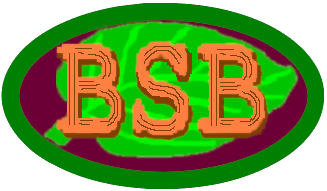
|
Subjects
|
Element: Definition
Click any underlined text below for a context-specific definition, example, and to ask questions
- An element is a type of atomAtom
The smallest objects which can compose an element. All atoms have protons in their nuclei
Example:
All nitrogen atoms have 7 protons
which shares the same number of protonsPositively-charged particles which are found in the nuclei of all atoms. Atoms of each element have a unique number of protons
Example:
Adding a proton to an atom of element nitrogen (7 protons) would make it oxygen (8 protons)
as all other atoms of that element. For example, all atoms with one proton are the element hydrogenHydrogen atoms are the smallest possible atoms with only one proton - and one electron when neutrally charged. Together, hydrogen atoms can form hydrogen gas which is the least dense gas in existence. Hydrogen atoms are also found bound to other elements in many biological moleucles
Example:
Hydrogen gas was used to fill airships becasue it is considerably lighter than air
and all atoms with two protons are helium atomsHelium is the second lightest element. Unlike most hydrogen atoms, the nuclei of helium atoms generally contain neutrons
Example:
Helium forms a heavier, but much less flammable gas than hydrogen
- A substance composed of many atoms of only one element can also be called an element. Many helium atoms compose the gas
A gas is any substance which can expand or compress to fill any volume. On an atomic level, the atoms or molecules comprising a gas are not strongly attracted to one another. This allows atoms or molecules of gas to move nearly independently of each other to fill larger or smaller containers
Example:
Carbon dioxide gas molecules will spontaneously move farther from each other when a soda can is opened to the surrounding air
of element helium that fills a balloon - Both atoms and substances of the same element share many properties
Due to their shared number of protons, atoms of the same element have the same number of electrons when neutrally-charged and form bonds with the same types and numbers of other atoms. These atoms form substances with shared properties such as phase of matter at a given temperature and pressure, electrical conductivity and reactivity
Example:
Oxygen atoms bond to each other to form pairs (O2). All oxygen atoms share this ability. Similarly, the substance oxygen is always a gas at room temperature and pressure
What properties can be different between atoms of the same element?Why do atoms of an element share many properties?
- There are 118 known elementsThe 118 Known Elements
All 118 known elements can be found in the periodic table of elements. Each element is made of atoms with a different number of protons
Example:
The largest known element, oganesson, has 118 protons
from which all known matterAnything which takes up space and has mass is matter.
Example:
Matter includes solid objects like an orange, liquids like water and gases like steam
is made - Most substances are composed of a combination of atoms
A substance is composed of at least two atoms chemically bonded together. All of the atoms may be of the same element, or atoms of different elements may be combined. Substances composed of atoms of two or more elements are called compounds.
Example:
Sucrose is made of bonded carbon, hydorgen and oxygen atoms
of different elements
Click on the image below to explore the components of an atom